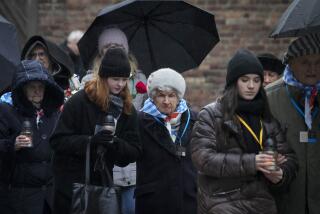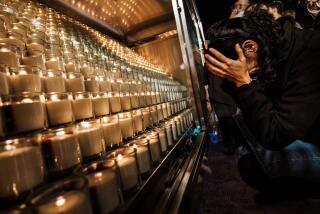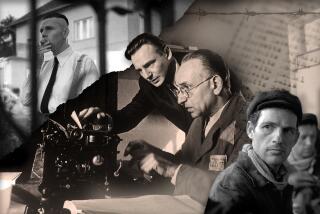The Holocaust by Martin Gilbert (Holt, Rinehart & Winston: $19.95; 830 pp.)
Think of the most dangerous psychopaths and bullies, all the mass murderers, the worst serial killers and the most sadistic torturers you have ever heard or read about. Multiply their number by several thousand.
Imagine organizing such people and putting them in power in government, in charge of the police, of the military, of all the jails. Suppose they have complete control over every aspect of your life.
Your imagination will probably fall far short of comprehending the Nazi Holocaust.
Martin Gilbert’s new book chronicles the history of the Holocaust from the aftermath of World War I to the end of World War II ; from the rise to power of a small band of extremists in Germany to the conquest of Europe; from the anti-Semitism of Martin Luther to the gas chambers of Auschwitz; from the peculiar paralysis of the Western democracies to protest or prevent the destruction of European Jewry to the persecution of the few survivors even after their liberation.
The book describes the course of a deadly disease which, after an incubation of many centuries, finally attacked a highly civilized country, causing the collapse of its civilization and vast permanent damage to the world. The disease is racism and despite all that happened, no country is free of it today.
That may be the best reason for having yet another work published about the Holocaust, a subject that already has given birth to a virtual industry in histories, museums, memoirs and documentaries.
But the need for such history is much deeper. Even as the Nazis tried to eliminate all Jews from the face of the Earth, the Jews fought back by surviving when death was a far more acceptable alternative. They recorded and continue to remember their sufferings, when forgetting might be the only way to sedate the incessant pain.
Each year, fewer survivors remain; in another generation, the victims, the witnesses and the criminals will all be dead. Meanwhile, there are increasing voices who claim that the Holocaust did not kill 6 million Jews, that the whole thing was an Allied fabrication, that perhaps the Jews were responsible for their own misfortunes. These voices belong not just to Neo-Nazi fanatics: They include a British historian and a teacher in Canada. A historical institute in Torrance cynically offered a prize to anyone who could prove that the Holocaust happened. The institute was sued successfully for the award by Mel Mermelstein, a survivor.
No modern historian, if he is to interpret our world, can sidestep the Holocaust. Martin Gilbert, a prolific Oxford don who follows the generation of great British historians that include A. J. P. Taylor, Alan Bullock and Hugh Trevor-Roper--already has dealt with some aspects of the subject, both as Winston Churchill’s official biographer and in “Auschwitz and the Allies.” This new book provides the entire panorama in which Auschwitz was one detail and the Jews not the only victims.
Gilbert combines a vast amount of official Allied documents, including captured and intercepted German communications, with secret diaries kept by victims and their murderers. In the decade since Lucy Davidowicz’s book, “The War Against the Jews,” written evidence keeps coming to light, and many witnesses have come forward with small but often important bits of the truth.
Gilbert offers new information about the origins of the plan for “final solution”; he gives the names of the first Jew who was killed in each community overrun by the Nazis; he puts faces and words to the incomprehensible numbers of the murdered. He weaves the cold facts with nightmarish oral histories into a masterly chronological narrative that leads the reluctant mind through every circle of hell. With each unrelenting statistic, there comes a personal history, as these taken from just three pages of the book:
The young father whose infant child is suffocated in his hands to prevent his cries from betraying 15 Jews in hiding. Of the 33,771 Jews murdered and buried alive at Babi Yar, a wounded young woman crawled out from the ravine filled with bodies and lived to tell her tale. A 16-year-old Lithuanian boy was already in a mass grave when the bullets missed him; under cover of darkness, he went from door to door, where he was chased away by peasants cursing him. Naked and bleeding, in final desperation, he told an old widow that he was Jesus Christ who had just climbed down from the cross; she believed him and so he survived.
The Holocaust confronts us with the most clear-cut yet unanswerable questions about our humanity, our values and our capacity for suffering. It is a tragedy on a scale that no dramatist or artist has been able to express in its totality. Martin Gilbert gives us the current state of documented facts, showing how the Nazis and their collaborators won their only victory of World War II by murdering millions--Jews and gentiles alike--in cold blood. And by implication, we learn how it could happen again.
More to Read
Sign up for our Book Club newsletter
Get the latest news, events and more from the Los Angeles Times Book Club, and help us get L.A. reading and talking.
You may occasionally receive promotional content from the Los Angeles Times.








